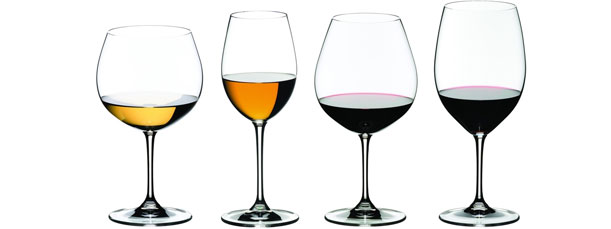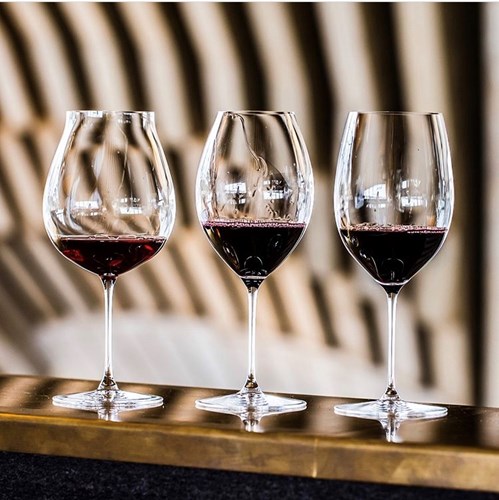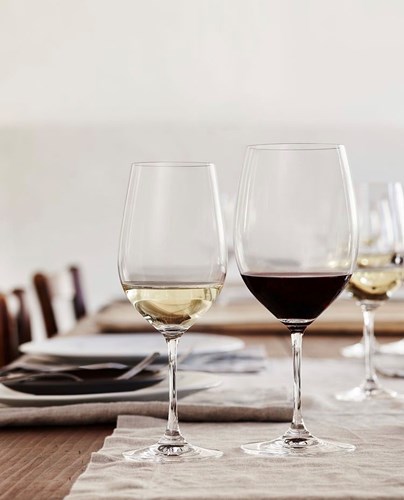THE PROPER WINE GLASS FOR EVERY STYLE OF WINE

Science is moving at a rapid pace and the great world of wine could not escape study and experimentation. New winemaking techniques, modern glass caps, decanters and of course endless options in wine glasses come make their appearance almost every day. The purpose of experimentation is, of course, enjoyment. The choice of glass is crucial for the enjoyment of the wine and the accent of its aromatic character.
It may seem a bit strange but, every type of wine demands for its own wine glass. A study conducted in 2015, by a group of Japanese researchers, recorded special images of the different patterns of ethanol vapors in different glasses of wine. And why do we care about that? We care big time since ethanol carries the volatile aromatic compounds of wine as it evaporates and brings them to our nose. Simply put, a different glass shape can make our wine smell different, which is why wine glasses have been created specifically for every style and variety of wine.
The initial - basic types of wine glass that a "wine lover" needs are four: white, red, sparkling / champagne and fortified / sweet wine glasses. In general, wine glasses should be transparent, without patterns and carvings, stemmed and with a U shaped vessel. The stem is crucial because we that way we can hold the glass without affecting wine’s temperature. If you really want to enjoy the rich aromas of a good wine, then the amount of wine should not exceed 1/3 of the glass.
Sparkling wine
Opinions about sparkling wine glasses differ. There are those who believe that sparkling wines should be served in flute glasses. The narrow and long shape of this glass "forces" the bubbles to travel a greater distance until they come out into the air and that helps the wine retain its creamy and lively character for a longer time. On the other hand, there are those who believe that glasses of this type do not allow us to enjoy the delicate aromas of wine. This portion of people enjoy sparkling wines either in a glass of white wine or in new glasses designed by well-known companies and shaped like a tulip. Try both and choose the one you like best because wine is always a matter of personal taste.
Red wine

It is usually served in large glasses, so that the content of the glass come in contact with oxygen, resulting in highlighting its rich aromas. Oxygen has also an effect on tannins, reducing their intensity and contributing to a more pleasant mouth feel. Famous red varieties such as Syrah, Pinot Noir and Cabernet Sauvignon have their own glasses that allow the wine to unfold its entire aromatic temperament. If you are wondering about the proper wine glass for Xinomavro or Agiorgitiko, we have the answer. Enjoy your Xinomavro in a Pinot Noir glass and your Agiorgitiko in a Cabernet / Merlot glass.
White wine


White wines need narrower glasses to keep their temperature as low as possible while their mouth is narrower to work collectively on their light aromas, thus multiplying their intensity. Of course, wine glasses have been created for Riesling, Sauvignon Blanc and white Burgundies that can alternatively be used for aged white wines such as Santorini. The last glasses are reminiscent of a the glasses of red wine as they are large in size and wide rimmed this is because aged white wines need space and time to “breathe”. This means that they need a larger vessel to come in contact with more oxygen and to fully develop their aromatic profile.
Sweet wine
Small in capacity and narrow mouth, these are the two characteristics that sweet wine glasses should have, so that the amount served is less than that of red and white wine and the emphasis is on the fruity characteristics and not on the alcohol.
Ioanna Mavrokefalou
Oenologist


